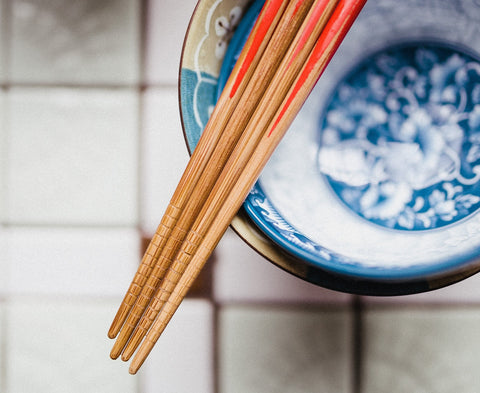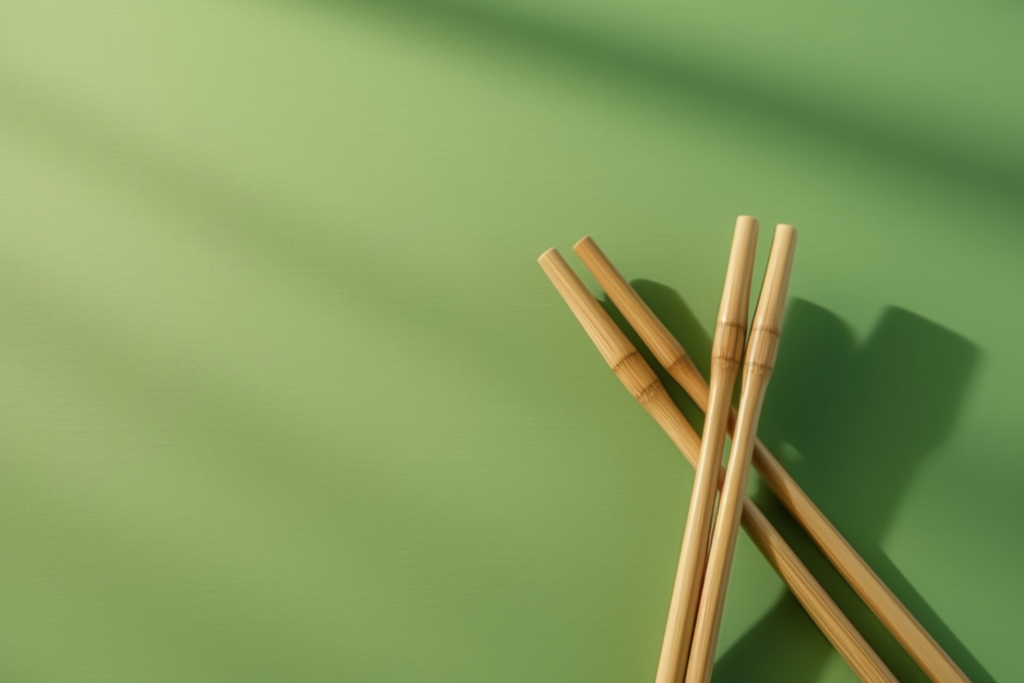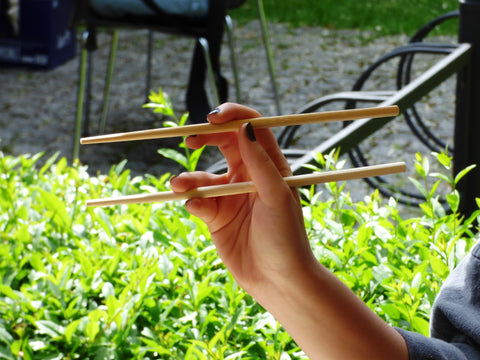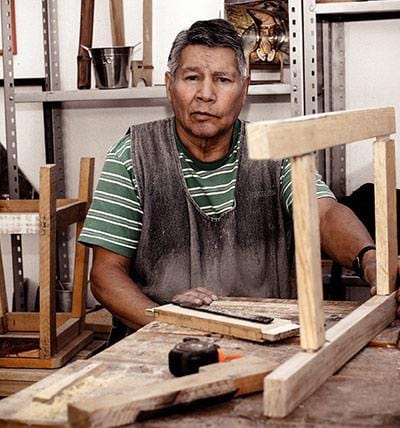Some argue that using chopsticks can actually be easier than using a fork, but others are skeptical. Let's explore the case for chopsticks and whether they truly offer advantages over traditional Western utensils.
Introduction: The Great Debate - Chopsticks vs Forks
For centuries, people have debated whether chopsticks or forks are the superior utensils for eating food. While forks and spoons have been widely used in the West, chopsticks are the utensil of choice in many Asian countries such as China, Japan, and Korea.
One of the main arguments for using chopsticks is that they can provide greater control when handling food.
Unlike a fork, which can be difficult to maneuver with precision, chopsticks allow you to pick up individual pieces of food, such as rice or small vegetables, with ease.
They are also versatile utensils, allowing you to scoop up liquid dishes like soup, or even to use them as a makeshift knife or fork when needed.
The Case for Chopsticks: Why Using Chopsticks can be Easier than a Fork
Many dishes in Asian cuisine are served in smaller portions, and eating with chopsticks allows you to savor each bite while keeping portion sizes in check. Chopsticks are also a common utensil in Asian restaurants, and mastering their use can be a fun and rewarding experience when dining out.

Cooking with chopsticks is also a common practice in many Asian cultures. Using chopsticks to stir-fry vegetables or to flip meat in a pan can be a useful culinary skill, and can even add a touch of authenticity to your Asian-inspired dishes at home.
In many Asian countries, using chopsticks is considered an essential aspect of table manners, and mastering their use can be a sign of respect to the host. Moreover, chopsticks come in a variety of styles, from traditional bamboo or wooden chopsticks to modern disposable ones, adding to the cultural and culinary experience.
The Advantages of Using Chopsticks as a Utensil
They can offer greater control when handling food, are versatile for a variety of dishes and can be a fun and cultural experience when dining out. However, it's important to note that chopsticks may not be the ideal utensil for all foods, particularly those that are slippery or require a larger utensil to handle. Ultimately, the choice between chopsticks and forks comes down to personal preference and the type of food being eaten.
A Brief History of Chopsticks in Japan
Chopsticks are an essential part of Japanese cuisine, but their history in Japan can be traced back to China. The use of chopsticks began in ancient China over 5000 years ago, and the practice gradually spread throughout East Asia, including Japan. The first pair of chopsticks used in Japan were reportedly brought from China in the 7th century and were used mainly for religious ceremonies. However, it wasn't until the Edo period (1603-1868) that chopsticks became a common utensil for everyday meals in Japan.
Japanese Chopsticks: Unique Features and Cultural Significance
Japanese chopsticks are distinct from those used in other Asian countries. They are usually made of wood and are shorter than Chinese chopsticks. One unique feature of Japanese chopsticks is that the ends of the chopsticks are pointed, rather than rounded. This allows for greater precision when picking up small or delicate food items.
Chopsticks are used for a variety of dishes in Japan, including rice, noodles, and vegetables. Eating rice with chopsticks can be a difficult task for foreigners, but many Japanese people prefer chopsticks to spoons and forks. Holding chopsticks correctly is an important aspect of Japanese table etiquette, and it may take some time to learn how to use chopsticks properly.
Japanese people also believe that using chopsticks to eat is more eco-friendly than using utensils made of plastic or metal. In addition, using chopsticks can help prevent overeating, as it forces the eater to take smaller portions and chew their food more thoroughly.
However, there are certain chopstick taboos to be aware of in Japan. For example, it is considered rude to stick your chopsticks upright in a bowl of rice, as this resembles the incense sticks used in a funeral ceremony. It is also impolite to pass food from one person to another using chopsticks, as this is reminiscent of a ceremony performed at a funeral.
Using chopsticks correctly is an important aspect of Japanese table manners, and there are specific techniques for holding them. The middle part of the chopsticks should be placed on the ring finger, with the index finger and thumb used to grip the chopsticks.
The index finger should be used to move the top chopstick up and down while the bottom chopstick remains stationary. This technique allows the eater to pinch food items, such as a morsel of a pea, and scoop the rice into their mouth.
In conclusion, Japanese chopsticks have a long and rich history in Asia, and they continue to be an important part of Japanese culture today. While they may be difficult utensils to master for foreigners, using chopsticks can provide greater convenience and cultural significance to the dining experience.
Conclusion: Is Eating with Chopsticks Really Easier than Using a Fork?
The debate over whether eating with chopsticks is easier than using a fork continues. While some people may find the invention of chopsticks amazing, others see them as nothing more than a decorative weapon. However, they are used in many cultures and homes, while some people may find it easier to use a knife and fork. In Korea, chopsticks are usually longer and thinner, and some people may need to learn to use them properly to avoid dropping food.
When eating greasy or slippery foods, using two or three chopsticks together can be helpful. In fact, inventors have even come up with a one-chopstick utensil, but it has been deemed useless and not practical for everyday use. Stabbing food with chopsticks is not proper etiquette, and they should be placed in a table setting with the first chopstick resting on the middle part of the index finger and the second chopstick extending beyond the thumb.

Questions & Answers
Do chopsticks have any advantage over forks?
Chopsticks can provide a few advantages over forks, such as being more eco-friendly and allowing for easier handling of small or delicate food items. Additionally, some people may prefer the cultural significance or the aesthetic appeal of using chopsticks.
Why do people use chopsticks instead of forks?
People use chopsticks for a variety of reasons, including cultural traditions, personal preferences, and practical considerations. For example, chopsticks may be more useful for picking up small food items like peas or morsels of meat, and they can also provide a cleaner way to eat certain dishes like sushi or noodles.

Why do Asians use chopsticks instead of forks?
Chopsticks have a long history in East Asia and have become an important part of many Asian cultures. They are used for practical and cultural reasons, as well as for aesthetic and symbolic purposes.
For example, using chopsticks can be seen as a way to show respect for food and the environment, and they may also be associated with certain religious or spiritual practices.
Is it easy to eat with chopsticks?
For some people, eating with chopsticks may be more difficult than using a fork, especially if they are not accustomed to using them or have difficulty with fine motor skills. However, with practice and patience, many people find that using chopsticks becomes easier over time. Additionally, certain foods or dishes may be more suited to chopsticks, such as rice or sushi.
ABOUT THE AUTHOR
Fred Felton
Content Creator / Editor
Fred Felton is a copywriter, editor and social media specialist based in Durban, South Africa. He has over 20 years of experience in creating high end content. He has worked with some of the biggest brands in the world. Currently Fred specialises in the wooden arts and crafts space, focussing on innovative wooden product design. He is also a keynote speaker and has presented talks and workshops in South Africa.






